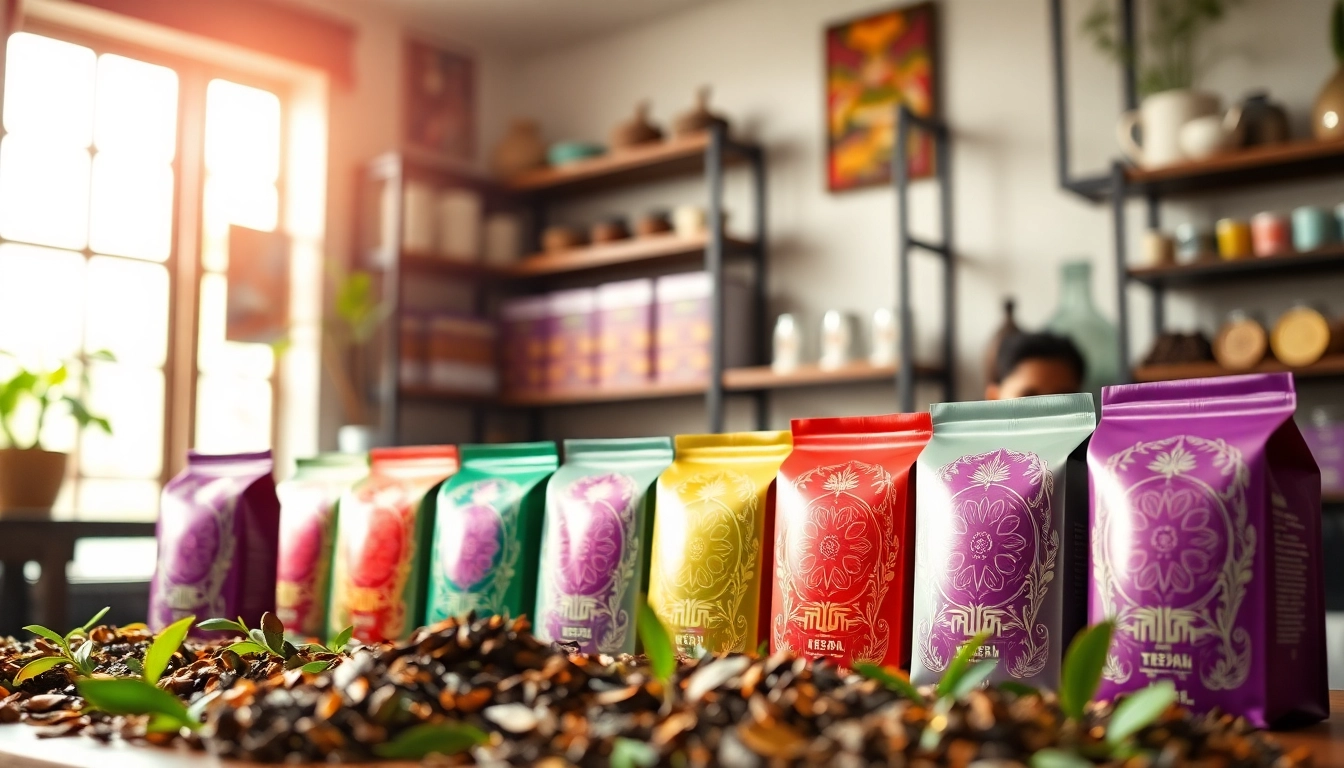Introduction to the Best Teas from Nepal
Nepal is not just synonymous with breathtaking landscapes and diverse cultures; it is also a treasure trove for tea enthusiasts. The nation’s mountainous terrain, pristine climate, and rich agricultural practices create a perfect environment for cultivating unique and flavorful teas. Among the myriad of options, exploring the best teas from Nepal offers a gateway to understanding this country’s rich heritage and the varieties it brings to the global tea market. This article will delve into the historical significance of tea in Nepal, the different types of teas produced, their unique health benefits, and how to enjoy them fully.
The Rich History of Nepalese Tea Culture
The tradition of tea-drinking in Nepal dates back to the 19th century when it was introduced by Tibetan traders. Over time, the popularity of tea among the local populace increased, particularly in regions like Ilam. The first tea estates in Nepal were established in the mid-20th century, and since then, Nepalese tea has evolved into a unique product recognized globally for its quality and flavor. This journey reflects a blend of local traditions and international influences, notably from neighboring countries like India and China.
Tea culture in Nepal is not merely about consumption; it is deeply woven into the social fabric. Tea is often used as a gesture of hospitality, and it plays an integral role in various ceremonies and rituals. Today, as Nepal moves towards a more commercial global context, many tea estates promote organic farming practices, enhancing the tea-drinking experience with an emphasis on sustainability and cultural heritage.
Why Nepal Teas Stand Out in Global Markets
One of the distinguishing features of Nepalese tea is its unique flavor profile, which often resembles that of Darjeeling tea but with its distinctive preferences. Factors contributing to the exceptional quality of Nepalese tea include:
- High Altitude Cultivation: Most tea estates are nestled in the verdant foothills of the Himalayas, which not only enhances the taste but also the aroma of the tea leaves.
- Rich Soil: The nutrient-rich soil, imbued with minerals from the Himalayan range, contributes significantly to the quality and taste of the tea.
- Traditional Methods: Many estates still employ traditional harvesting and processing methods, which preserve the natural flavors and characteristics of the tea.
- Diverse Climates: The variation in climate across different regions allows for a diverse range of teas, each with a unique profile.
A Brief Overview of Popular Tea Types in Nepal
Various types of teas are produced in Nepal, each offering unique characteristics that cater to different palates:
- Black Tea: Known for its bold flavors and rich aroma, black tea from Nepal is often compared to the world-famous Darjeeling.
- Green Tea: Nepalese green teas are celebrated for their fresh, delicate taste and are often harvested early in the season, yielding tender, fragrant leaves.
- White Tea: Less common and prized for its subtlety, white tea undergoes minimal processing, offering a light and refreshing flavor.
- Herbal Teas: Herbal mixtures with unique local flora provide not just great taste but various health benefits.
Exploring Different Varieties of Nepalese Teas
Black Teas: Bold Flavors and Timeless Appeal
Nepalese black teas have gained international acclaim for their robust flavor profile. The top-growing areas, such as the Kanchanjangha and Ilam district, produce teas that are often characterized by a slight muscatel flavor, which is highly sought after. Notable varieties include:
- Himalayan Golden Black Tea: Recognized for its golden-tipped leaves and aromatic characteristics, this tea has won several awards globally.
- Jun Chiyabari Black Tea: Sourced from a biodynamic farm, this tea boasts balanced complexity with hints of stone fruit.
Green Teas: Freshness from the Himalayan Mist
Green teas from Nepal are typically harvested in the spring when the leaves are tender and bursting with flavor. The most notable types include:
- Organic Nepal Green Tea: Offers a smooth and refreshing taste with grassy notes, providing an invigorating experience.
- Guranse Green Tea: This tea is known for its honey-like sweetness and is often favored for its vibrant green hue.
Herbal Blends: Unique Infusions of Tradition and Wellness
Herbal teas have gained considerable popularity due to their health benefits. These blends often incorporate native herbs and flowers, reflecting both tradition and local biodiversity:
- Rose Tea: Infuses the delicate aroma and flavor of Himalayan roses.
- Mint Tea: A refreshing blend that utilizes locally grown mint, perfect for digestion and refreshment.
Where to Buy the Best Teas from Nepal
Online Marketplaces and Specialty Stores
With the rise of the internet, purchasing Nepalese tea has never been easier. Several online marketplaces now offer a wide selection of authentic Nepalese teas. These include:
- Local Online Retailers: Websites like Nepal Tea Traders provide direct access to some of the best teas sourced from local estates.
- Global Tea Shops: Many international retailers focus on organic and specialty teas, often carrying curated selections of Nepalese teas.
Supporting Local Cooperatives and Farmers
When purchasing tea, consider buying directly from cooperatives or local farmers. This not only ensures authenticity but also contributes to fair trade practices and supports the local economy. Engaging with local suppliers can yield high-quality teas and create a meaningful connection between consumers and producers.
Tips for Purchasing Authentic Nepalese Teas
When shopping for Nepalese tea, keep these guidelines in mind to ensure you are getting quality products:
- Check for Certifications: Look for organic certifications or approval from recognized bodies to guarantee quality.
- Read Reviews: Customer reviews can help you gauge the flavor profiles and quality of the teas.
- Inquire about Sourcing: Don’t hesitate to ask sellers about the origin and processing methods of their teas.
- Seek Recommendations: Engaging on tea discussion forums can yield valuable insights into the best teas to purchase.
Brewing Techniques for Optimal Flavor
Essential Tools for Tea Brewing
To enjoy the full-bodied flavors of Nepalese teas, having the right tools for brewing is essential. Invest in high-quality tea equipment such as:
- Teapot or Gaiwan: A good teapot allows for efficient brewing and flavor maximization.
- Tea Infuser: Helps to steep loose tea leaves effectively.
- Thermometer: Ensures your water is at the optimal temperature for different tea types.
- Scale: A scale can help you measure the correct amount of tea for a perfect brew.
Step-by-Step Guide to Brewing Black and Green Teas
Here’s a simplified guide to brewing black and green teas from Nepal:
Brewing Black Tea:
- Start with fresh, filtered water and heat it to around 200°F (93°C).
- Measure about 1 teaspoon of loose tea for every cup of water.
- Infuse the tea leaves in the hot water for 3-5 minutes based on desired strength.
- Strain and serve plain or with milk as per your taste preference.
Brewing Green Tea:
- Heat fresh water to about 175°F (80°C) to avoid bitterness.
- Use approximately 1 teaspoon of loose leaf tea for every cup of water.
- Steep for about 2-3 minutes for optimal flavor.
- Strain and enjoy plain or with a slice of lemon.
Common Mistakes to Avoid When Brewing Tea
To achieve the best flavor, avoid these common pitfalls:
- Using water that is too hot can scorch delicate leaves, especially green tea.
- Oversteeping can result in bitterness, so timing is crucial.
- Not pre-warming teapots can lead to temperature drops, affecting extraction.
The Health Benefits of Enjoying Nepalese Teas
Rich Antioxidants and Their Health Impact
Nepalese teas, particularly green and herbal varieties, are loaded with antioxidants. These compounds combat oxidative stress and lower the risk of chronic illnesses. The health benefits include:
- Heart Health: Drinking black and green tea can improve cardiovascular health.
- Weight Management: Green tea is known to assist in weight loss efforts due to its metabolism-boosting properties.
- Reduced Risk of Cancer: Many studies suggest that antioxidants in tea can lower cancer risks.
Tea as a Cultural Ritual for Well-Being
In Nepal, tea drinking is often more than just a daily ritual; it’s a moment of connection, relaxation, and mindfulness. The preparation and serving of tea can lead to enhanced social relationships and well-being, thus elevating mental health experiences.
Recommendations for Daily Tea Consumption
To enjoy the full health benefits of Nepalese teas, consider integrating them into your daily routine:
- Start your day with a cup of black tea for an energy boost.
- Incorporate green tea into your mid-afternoon routine for its refreshing qualities.
- Experiment with herbal blends in the evening to unwind and relax.


